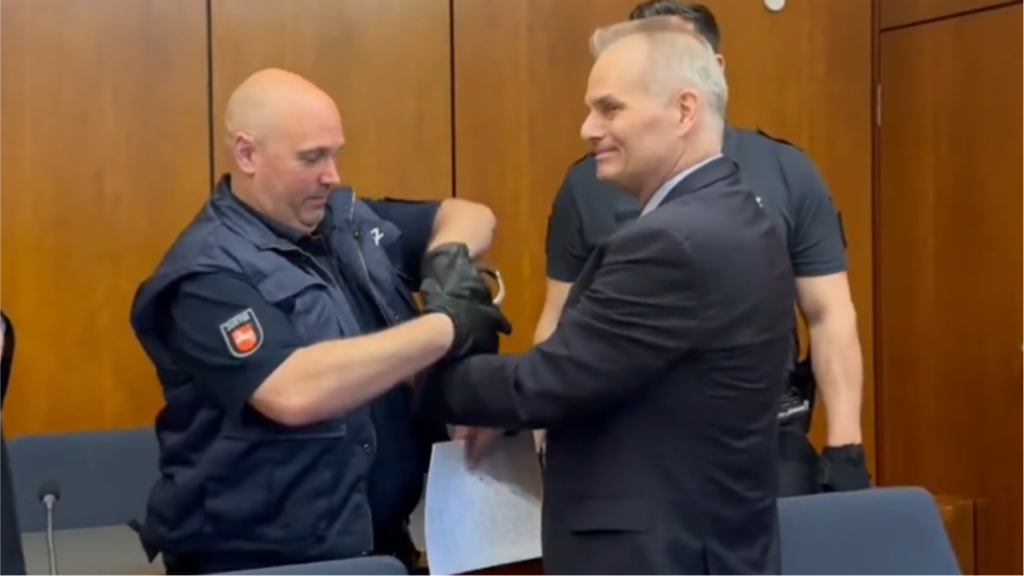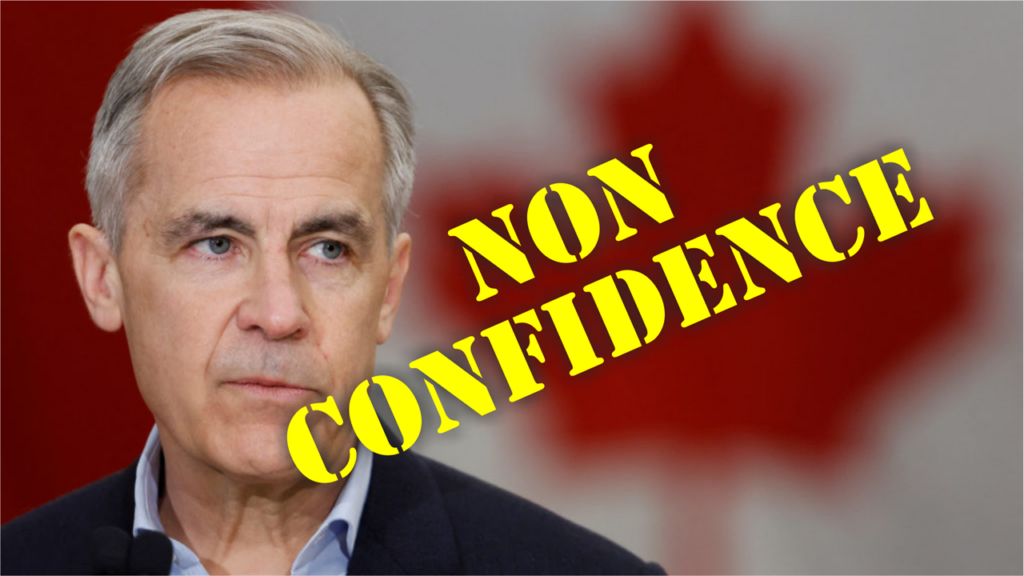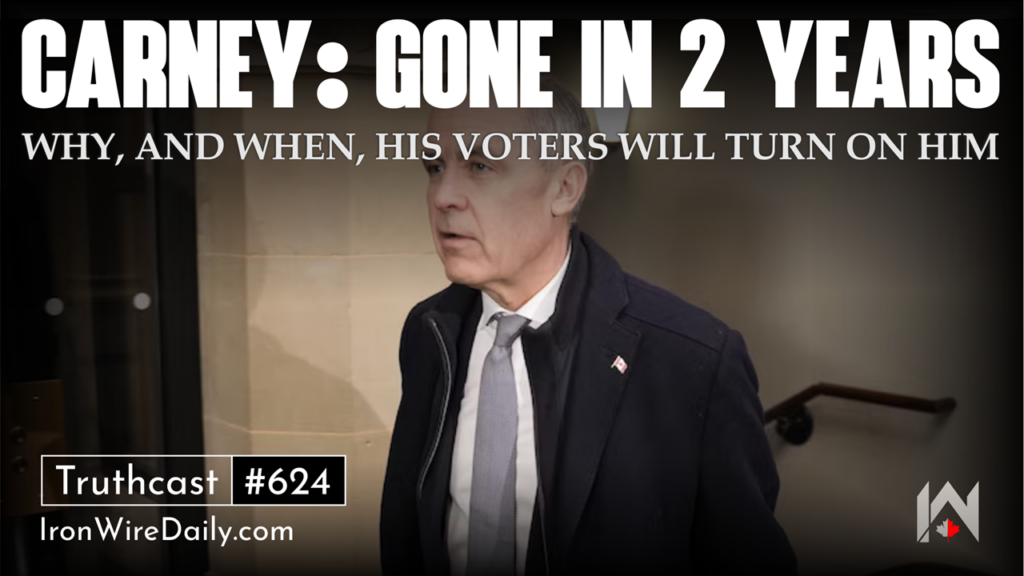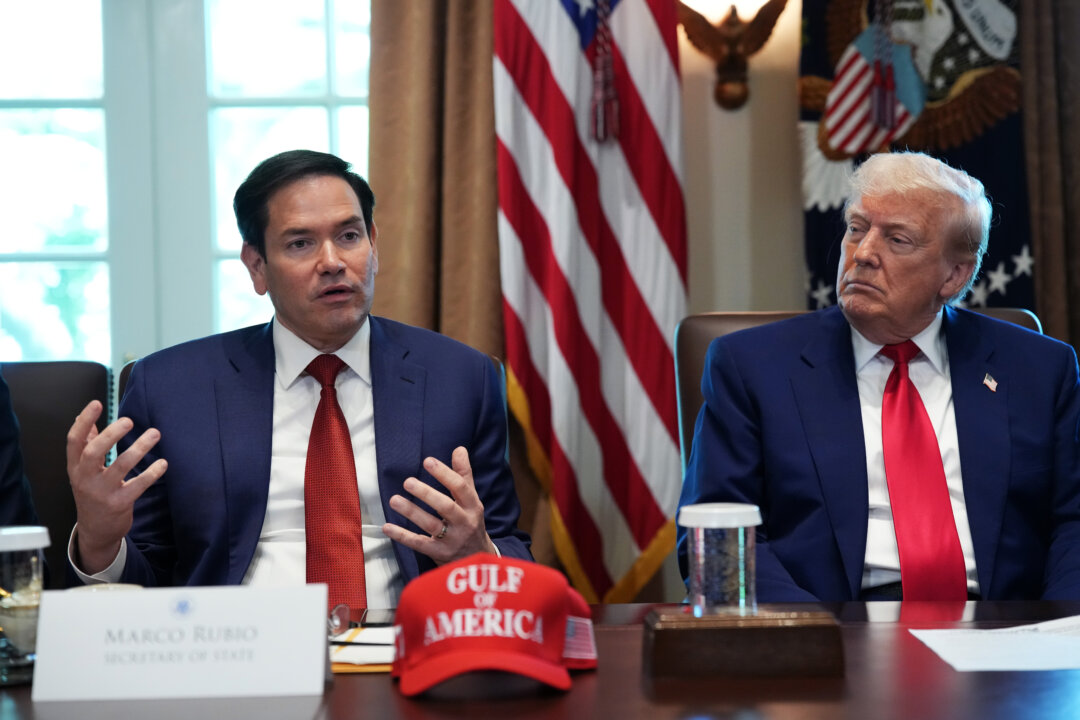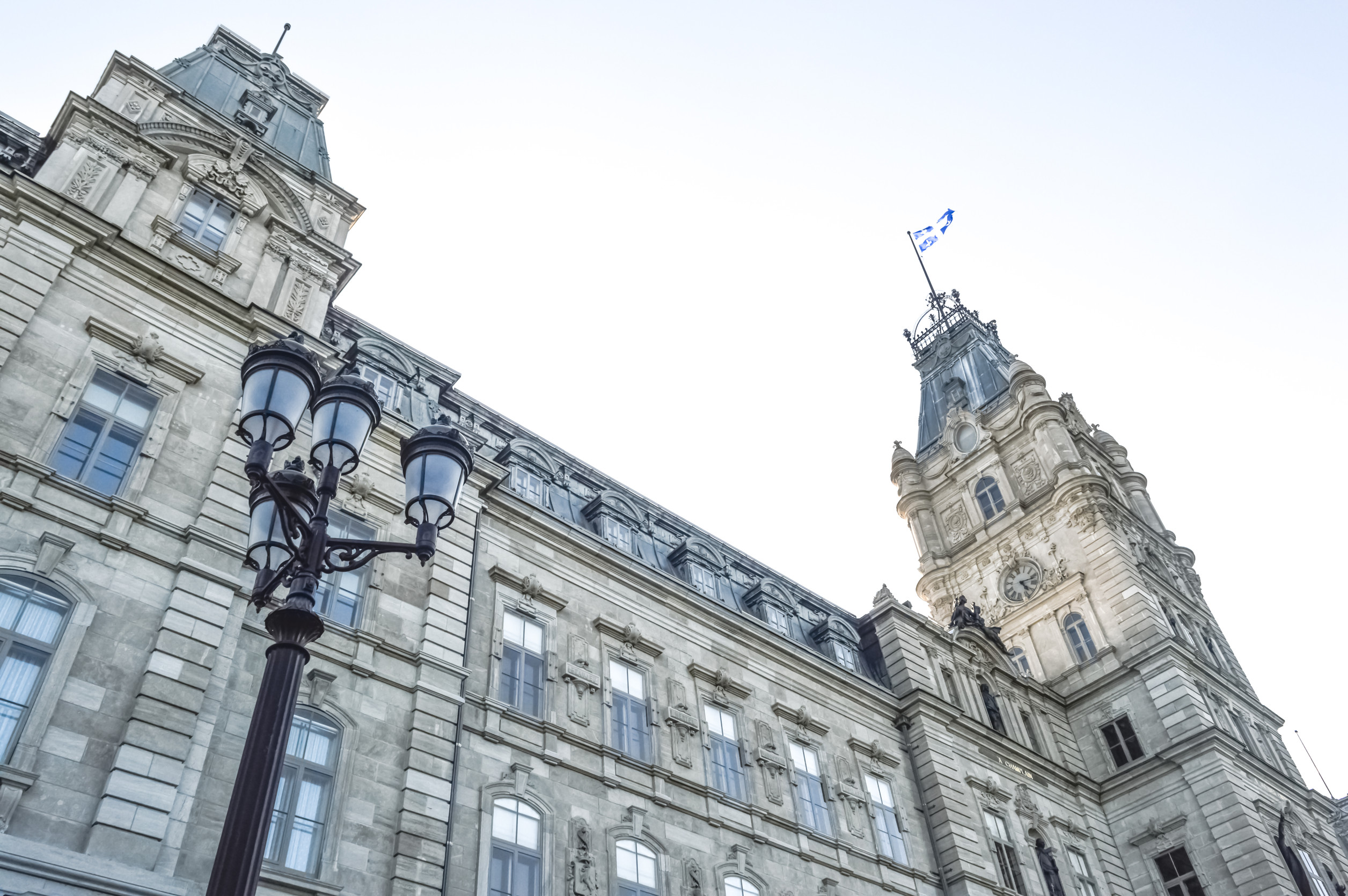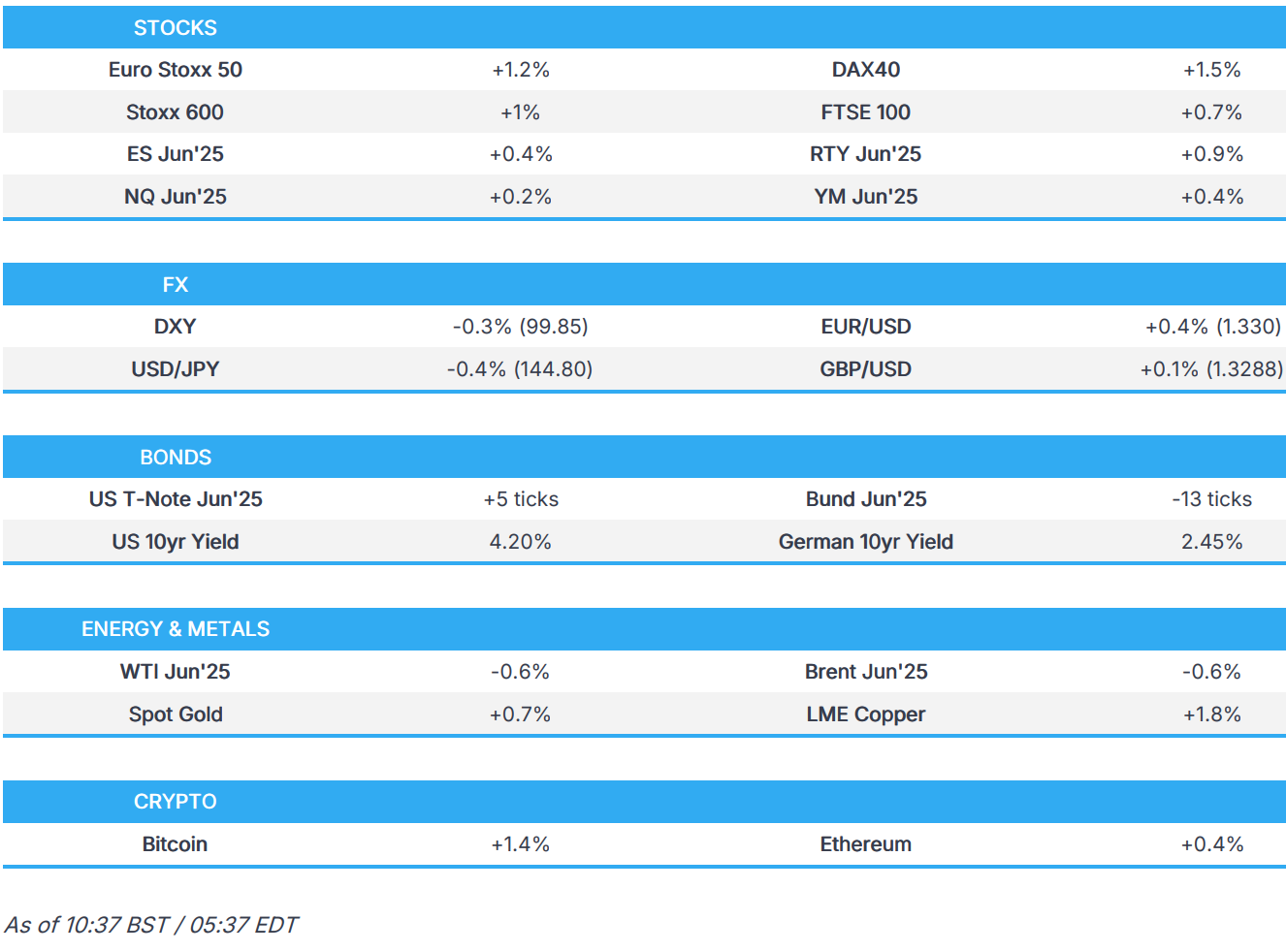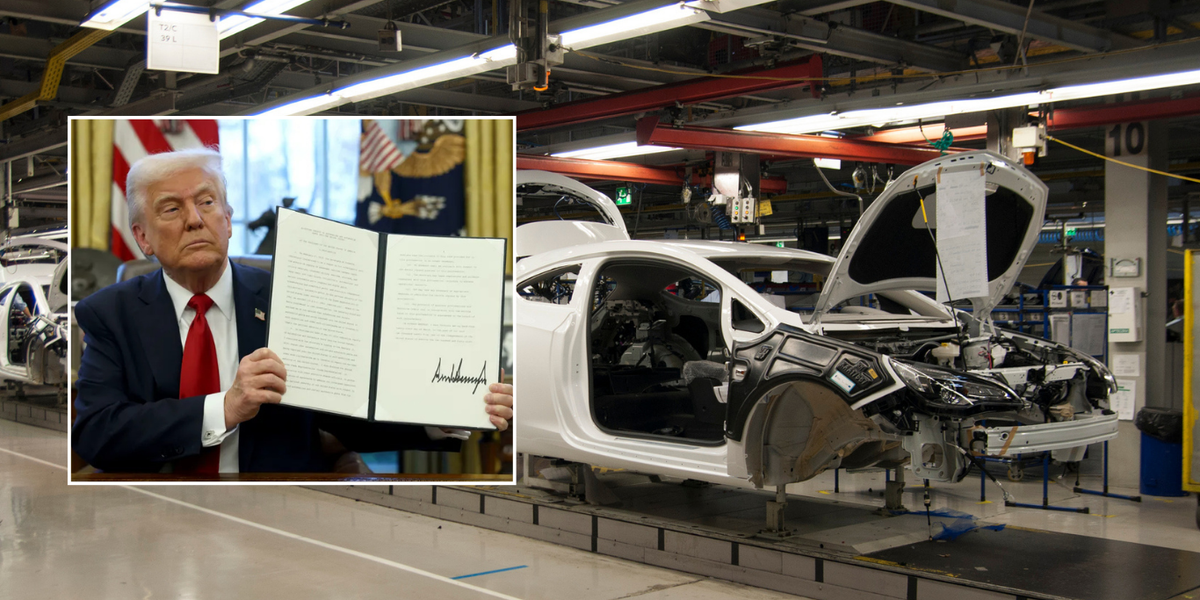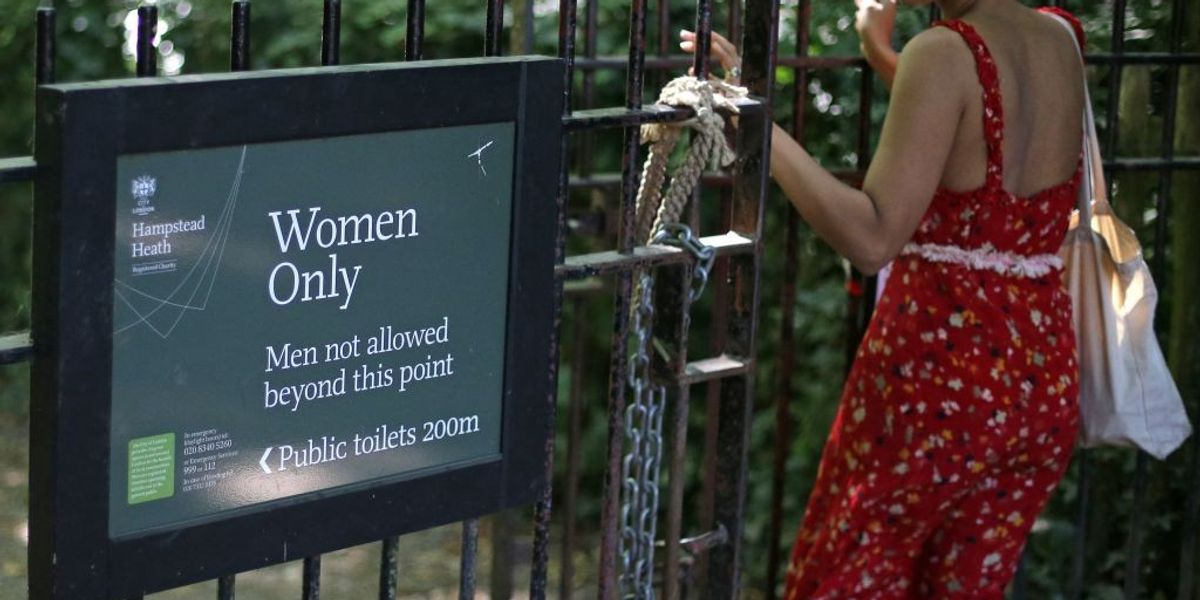Catherine Austin Fitts: While the central bankers are building the control grid, they are also preparing for a near-extinction event to save themselves – The Expose
Catherine Austin Fitts: While the central bankers are building the control grid, they are also preparing for a near-extinction event to save themselves
Former Bush administration official Catherine Austin Fitts joined Tucker Carlson to discuss how America’s leaders gave up on the country in the 1990s, began stealing trillions and built a digital prison to control the American population.
With digitising currencies, they are converting a currency system into a control system. The goal is to move the majority of people to a lower economic footprint.
If the majority of the population becomes poorer, where is all the money going? One possible explanation, Austin Fitts says, is that it is being invested in underground bases and city infrastructure, potentially in preparation for a near-extinction event.
Let’s not lose touch…Your Government and Big Tech are actively trying to censor the information reported by The Exposé to serve their own needs. Subscribe now to make sure you receive the latest uncensored news in your inbox…
The following is a summary of what was discussed in the video above. We have shown approximate timestamps in [square brackets] in subsection headings as our readers may find these useful. There is also a chapter and timestamp listed in the description box below the video on YouTube.
Table of Contents
Attempts to Control the World’s Currency [01:12]
There is a concerted attempt by governments around the world to digitise commerce and currency, which would allow them to control people through money, and this has been happening for a long time. The goal is to convert the currency system into a control system.
The digitisation of currency and commerce is part of a larger system that aims to create a digital concentration camp, where people can be monitored, controlled and influenced at an individual level, using AI and software to create a custom surveillance, nudging and enforcement system for each person.
The system would allow for the enforcement of rules and regulations, as well as punishment, by controlling access to money and credit. This can be seen in examples such as the covid “pandemic,” where restrictions on movement and mandates for pharmaceuticals were enforced through digital means.
The Bank of International Settlements, which is the central bank of central banks, has been running the process to implement an all-digital monetary system, with innovation hubs all over the world, and has the technology to enforce rules on how money works, as stated by the general manager of the Bank of International Settlements in 2020.
Related: Central Banks Will Have Absolute Control Over CBDC Transactions – BIS General Manager
Austin Fitts referenced the film ‘The Lives of Others’ which centres on the monitoring of East Berlin residents by agents of the Stasi, East Germany’s secret police. In this film, “you see what it’s like to be under surveillance for 24/7. Think of each one of us, we’re all under surveillance, not just by governments but by corporations [as well],” she said.
Corporations that are monitoring your digital interactions may not be nefarious; it may be for sales and marketing purposes, for example. But the current digital system is swarming with AI software bots that try to learn from, extract data about and influence what people do. Imagine what happens when everyone is part of an all-digital system – there is no escape and rules can be enforced, literally allowing for control over people’s lives, Austin Fitts explained.
For an example of this kind of control, we need not look further than what was done to the Canadian truckers. The protestors’ bank accounts were frozen – and their friends and supporters also had their accounts frozen – when they did something that the establishment didn’t like. This phenomenon of being debanked happened to many people in other countries as well.
The process of being controlled and enslaved is often insidious and invisible, with something similar to a marketing plan that works one person at a time. It uses various methods to nudge and manipulate people into a trap. By using various carrots and sticks, people are lulled into complying with the control, and because much of the marketing plan is invisible and crafted individually, it makes it even more difficult for people to recognise who the enemy is and resist the control.
The current system is pushing to restrict freedoms as guaranteed by the US Constitution by 2030. Austin Fitts believes their efforts will fail. However, “What I don’t underestimate is how much damage they could do. And the failure may not come in time to save America,” she said.
The group Austin Fitts refers to as “they” is the central bankers.
The central bankers took control of monetary policy in 1913 and are now attempting to gain control of fiscal policy. “Once they get control of fiscal policy, it’s going to be much harder to reverse it,” she said.
Monetary policy controls the process of currency issuance, including governing and controlling credit issuance. Fiscal policy controls taxes and government borrowing, although the central bank does play a key role in the borrowing process.
The distinction between monetary and fiscal policies is crucial because if the central banks take control of fiscal policy as well, the problems of taxation without representation and questions about the limits of central bank power arise.
“Taxation without representation” is a political slogan that originated during the American Revolution, expressing the American colonists’ grievance against British rule. The phrase highlights the issue of being taxed by a government without having a say in its policies, as colonists had no representation in the British Parliament who were imposing the tax.
Likewise, if unelected central bankers take control of fiscal policy, they could impose taxes while not being accountable to the people they are taxing.
The Two Things That Lead to Inflation [12:11]
There are two primary causes of inflation: monetary policy that creates inflation and what Austin Fitts calls “de-globalisation,” which leads to real increases in the cost of goods due to the reversal of globalisation.
De-globalisation is causing inflation, Austin Fitts said, because it reverses the lower costs created by globalisation. For example, the severing of global supply chains leads to higher prices, and some products become uneconomical.
The process of deglobalisation is accelerating now, but it started during the 2008 financial crisis. It started in 2008 for several reasons; one being that America was trying to exercise more control through the US dollar system, but with BRICS, more and more countries have been trying to leave the dollar system. These countries leaving the US dollar system want to create a separate system to avoid the subsidy extracted by the US and to avoid being part of a unipolar model.
Central Bankers vs. the West [16:18]
For those who think globalisation is a good thing, consider Sir James Goldsmith’s explanation of it. In an interview with Charlie Rose in 1994, Goldsmith explained that with globalisation, “We are going to hollow out the middle class in the West and we are going to devastate our culture and we’re going to devastate the quality of the food supply,” Austin Fitts said.
“If you read my online book and you listen to Sir James Goldsmith, what they both describe is the fact [that] … the leadership knew how this would destroy or devastate the West,” she added.
Every hundred or so years, the central bankers do a reset. They felt that with the technology available, if they didn’t globalise, someone else would and they wanted to be in control of the process. But their idea of globalisation is not limited to this world.
Austin Fitts believes that one of the reasons to implement globalisation and so devastate the West was driven by a desire to create the capacity and centralise the capital needed to go into space. The central bankers’ goal is thought to be the creation of a multiplanetary civilisation, which requires significant capital, and they may have felt that globalisation was necessary to achieve this goal.
In 1994, as part of her role at the time, Austin Fitts was trying to clean up mortgage corruption, but discovered that infrastructure was being set up to intentionally increase mortgage fraud. Mortgage fraud is a public-private partnership between the Federal Reserve of New York (“New York Fed”), member banks and the federal government, she said. “The Treasury and the Fed [Federal Reserve] were clearly engineering a massive new mortgage bubble … and that mortgage bubble was going to centralise capital.”
In an attempt to counteract the mortgage debt fraud, Austin Fitts began working on a project to help communities decentralise political and economic power and create new wealth. In the spring of 1997, she gave a presentation to top corporate and state pension fund leaders about re-engineering the Philadelphia economy. “The top pension fund leader looked at me and he said, ‘It’s too late’. I said, ‘What do you mean it’s too late?’ He said ‘They’ve given up on the country, they’re moving all the money out starting in the fall’,” Austin Fitts said.
In October 1997, the beginning of the 1998 fiscal year, huge amounts of money started disappearing from the US government. By the time of 9/11, $4.1 trillion was missing from the Department of Defence and the Department of Housing and Urban Development (“HUD”).
In response to events on 9/11, the USA PATRIOT Act was signed into law on 26 October 2011. The Act made it easier to allocate large amounts of money to the national security state, and the black budget and secret financing for classified projects grew significantly. “In other words, it made it much easier to get enormous amounts of money for the national security state,” Austin Fitts said. She believes the mortgage fraud was one of the biggest sources of funding for these secret and classified projects.
What You Should Know About the Bank for International Settlements [25:02]
The Bank for International Settlements (“BIS”) is the central bank of central banks, located in Basel, Switzerland. It has 63 of the most powerful central banks as its members, including the New York Fed and the Federal Reserve, which became shareholders in 1994.
There are two important things to note about the BIS.
Firstly, the BIS has sovereign immunity, meaning it is above the law; it is its own country and has its own police force, with no one having the legal authority to move against it, except in minor cases such as a staff member being in a car accident.
Secondly, the BIS can move money, hold money on its balance sheet and manage money secretly. “So, if I want to, and I’m grossly oversimplifying, if I want to steal $21 trillion from the US government and park it on the balance sheet of the BIS, it can move it anywhere in the world and it can keep it on its balance sheet, secretly,” Austin Fitts explained.
The BIS was created after World War I to manage, in theory, the reparations of the German government. However, in reality, it was created by the Bank of England and central bankers to have an entity with sovereign immunity, allowing them to move money secretly. For example, the BIS played a significant role in World War II, with money being transferred back and forth between the Germans and Americans.
Understanding the BIS and the central banking system is crucial to understanding the power in the world and how the central banking system works. To do this, Austin Fitts recommends the book ‘The Tower of Basel’ by British author and journalist Adam LeBor, which documents and describes the history of BIS.
The Banker’s Plan to Conquer Space [29:48]
Austin Fitts has written about the plan to colonise space in two reports published by her Solari Report. The first is ‘Space Here We Go’, published in 2015 and the second, ‘The Space-Based Economy’ in 2017. You can find more resources for “space” on the Solari Report HERE.
To explain what the plan is, Austin Fitts began by explaining that a significant amount of capital has been centralised into the hands of a few billionaires, including Musk and Bezos, who are reinvesting that money into space projects. “Clearly there’s a centralisation of capital and a reinvestment” in space exploration, she said.
There are a few reasons for being interested in space: asteroid mining for resources, and the “big economic one” is the implementation of control through satellites. Satellites combined with telecommunications will help run the control grid globally. The control grid enabled by satellites can be used to track and enforce investments globally, and this is a key aspect of the space-based economy.
As well as mining for resources and the control grid, Austin Fitts thinks there are concerns about geophysical risks, and one way to mitigate these risks is to ensure that humanity does not rely on a single planet, thereby reducing the risk of extinction.
Are We Approaching an Extinction Event? [32:28]
Austin Fitts says anthropogenic climate change is a psychological operation. So, this isn’t a geophysical risk they are concerned with. But they are concerned about climate change, but they do not believe it is caused by human behaviour and instead think it may be related to solar activity.
She thinks they are worried about geophysical risks such as a solar minimum, which can cause big drops in the economy and agriculture, making it difficult to feed the population. Austin Fitts is not a climate expert and so she can’t confirm if this risk is real. Carlson said he has a friend who is very well informed and has convinced him that the risk of a solar minimum is real.
[Related: What effects will the Sun’s reduced activity over the next 30 years have on Earth?]
Secret Underground Bases All Across the US [35:59]
Austin Fitts said that there is a history of near-extinction events, which occur approximately every 10,000 to 12,000 years, and some theories suggest that these events may be caused by a pole shift or magnetic pole shift, leading to catastrophic flooding, earthquakes and other disasters.
The US government has $21 trillion of “undocumentable adjustments” or missing money in its budget between fiscal 1998 and fiscal 2015. The question that remains as to where this money is being allocated?
One possible explanation is the construction of underground bases and city infrastructure, as well as transportation systems. Austin Fitts has researched how many bases there may be, including a two-year data collection effort from 2021 to 2023, and has estimated 170 underground bases in the United States and under the ocean around the US, connected by a transportation network. Some of these underground bases are documented as part of the national security infrastructure, while others remain unconfirmed.
These underground bases are believed to serve two main purposes: to keep certain activities secret, such as a secret space programme, and to prepare for a potential near-extinction event, allowing for the continuation of human life in the event of a catastrophe.
Carlson said he knew a contractor who worked on an underground base in Washington, D.C. The contractor revealed that a power box, like a transformer box. on Constitution Avenue was actually a vehicle exit point from the White House.
Austin Fitts recommended watching an interview she conducted with Richard Dolan who provides further information on underground bases. You can watch the interview and read the transcript HERE.
The Washington Post’s ‘Top Secret America’ project in 2010 also shed light on the extensive network of top-secret installations built in the country, including underground and above-ground facilities following the PATRIOT Act.
Related: “Top Secret America” Washington Post Investigation Reveals Massive, Unmanageable, Outsourced US Intelligence System, Democracy Now, 19 July 2010
The Government’s Secret Energy Sources [44:51]
The discussion turned to the practicalities of these underground bases, such as food and water sources, ventilation and the energy supply required to operate them.
Austin Fitts is convinced the US has the ability to produce breakthrough energy at a low cost.
“My Dutch partners, [whom] I met because they were doing a series of conferences on breakthrough energy. And they brought together breakthrough energy inventors from around the world, you can see all the videos up on the internet, and really went through the history, from Tesla, of different inventors who have discovered and claimed different innovations with breakthrough energy. And I’m convinced that this energy exists. And I’m also convinced if you look at a lot of the really fast ships, flying around the planet, you know they’re not using classical electricity, they’re not running on diesel,” she said.
Austin Fitts knows someone who has been an investor in a breakthrough energy company called Brilliant Light Power for 30 years. This company swears they have got breakthrough energy.
The use of breakthrough energy on a widespread basis could be dangerous, as small groups of people could weaponise it, and its implementation could also lead to a loss of control for “Mr. Global,” those in power.
Austin Fitts explained further. “If you’re the risk manager and you’re in charge of managing the planet, this has more disruption capability both weaponisation [and] economic. Suddenly, everybody’s free to do whatever they want, so they’re much harder to control. So, if you’re Mr. Global [you’ll want to maintain the status quo and avoid that],” she said. “The other danger is, then the population skyrockets and you’re concerned about that.”
The Financial Coup [50:41]
Austin Fitts calls the money that is missing in the US government’s budget “the financial coup.”
“I think what happened was when the budget deal busted in 1995, they gave up on the government,” she said. “They just said, ‘This form of government will not work as a governance structure to manage the dollar system’.” Having lost faith in the government’s ability to manage the dollar system, they decided to re-engineer government through a “just do it” method, starting with pulling money out of the government and putting it in a debt trap and then shifting to the control model.
This financial coup started on 1 October 1997, which is the beginning of fiscal year 1998. By 2015, there were reports of $21 trillion in undocumentable adjustments in the government’s financial records. “From a cash standpoint, it could be $50 trillion or $10 trillion, there’s no way to tell unless you can get access to bank records,” Austin Fitts said.
In 2017, Austin Fitts and Dr. Mark Skidmore of Michigan State University published a study which found that the government had made $21 trillion in undocumentable adjustments.
Related:
- The Missing Money, Solari Report
- MSU scholars find $21 trillion in unauthorised government spending; Defence Department to conduct first-ever audit, MSU Today, 11 December 2017
In September 2018, during the Kavanaugh hearings, the White House, Senate and House (both Republicans and Democrats) issued an administrative policy called ‘Federal Accounting Standards Advisory Board Statement 56’.
This policy, Federal Accounting Standards Advisory Board Statement 56, allows for the appointment of a secret group to move money out of the financial disclosures of the United States, bypassing constitutional provisions related to financial budgeting and disclosure, and enables the government to avoid obeying laws and regulations related to financial budgeting. Additionally, it allows the government to appoint a secret group of people, by a secret process, to move money out of the financial disclosures.
The US government has numerous agencies and approximately 150 governmental entities and, when combined with classification laws and national security laws, it also applies to big banks and contractors working for the US government, resulting in a lack of financial disclosure, making it impossible to understand the true meaning of financial statements, including those of the US large cap stock market, the US bond market and the Treasury market.
The financial statements of New York Fed member banks and the Treasury Department are meaningless due to the secrecy surrounding them, allowing a secret group of people to manipulate and hide information, making it impossible to know what is missing or what part of the financial information is accurate, Austin Fitts said. The lack of transparency and overriding the rules, regulations and Constitution has “reached a level of absurdity,” she said.
Sovereign immunity has been extended to banks and other organisations through the New York Fed, allowing them to operate with impunity. Austin Fitts gave the example of US Attorney General Eric Holder making the decision not to prosecute HSBC.
Related: All the Plenary’s Men (video), Best Evidence (John Titus), 28 April 2017
The BIS and other international organisations, such as the IMF, the World Bank and the United Nations, have created an international overlay of organisations with various forms of sovereign immunity, enabling them to break the law without consequences, as seen in the financial crisis, where institutions like JP Morgan and Bank of America were able to lose trillions of dollars and have it replaced by the taxpayer.
The creation of these international organisations has resulted in a system where certain institutions are free to break the law, and the only requirement is to provide a portion of their profits to the Department of Justice in what Austin Fitts described as “a formal kickback system.”
Who Are the Masterminds Behind the Central Banks? [56:42]
Who is making decisions that are effectively above the law and have immunity? Who is Mr. Global?
From Austin Fitts’ experience, it is the central banking bureaucracy, which is the BIS and central bankers, that is making the decisions and running the global financial system. “Think of the planet as a house. So, you have the house, then you have financing the house (that’s the mortgage), then you have the insurance, then you have the equity in the house,” she explained. “So, you’ve got the real assets, you’ve got the banking system, you’ve got the insurance system and then you’ve got the owners.”
In Austin Fitts’ house analogy, the insurance layer is vital in protecting the equity in the house. In the global financial system, the central bank bureaucracy is the insurance layer, running the debt and the transaction system, which relies on the ability to swap and transact, ensuring the stability of the entire system.
So, the question is, who are the owners of the global financial system, the people who are the real decision-makers? “That’s the mystery,” Austin Fitts said. “I’ve spent my whole life trying to figure out: who are the real owners?”
In her experience, if someone’s name is publicly known, they are not one of the important owners. The actual owners are part of intergenerational pools of capital. Austin Fitts calls the group of people who have or control these intergenerational pools of capital “Mr. Global.”
“Mr. Global,” works by consensus through a committee system. “They do have a set of rules,” Austin Fitts said. Their challenge is that they are risk managers, they’re constantly extracting a lot of money from the financial system and they “always need that dividend.” The question is why do they need that dividend and where is this money is going.
“They’re constantly running the financial system to extract extra money, there’s always disappearing money. And the question is why and where’s it going,” Austin Fitts said.
Austin Fitts believes this money is going towards infrastructure projects, such as building the control grid, or towards setting up an endowment so that “they can run the world on a global governance that’s a dictatorship with an endowment so it’s a bigger endowment than anybody else’s.”
And “one of the most powerful pools of intergenerational capital that I’ve ever dealt with is the Harvard Endowment,” she said.
The Real Reason Behind the Battle between the Trump Administration and Harvard University [58:28]
The Harvard Endowment has a current value of over $50 billion, and the control over it is currently the subject of a lawsuit between the Trump administration and Harvard University.
“The Trump administration and the Department of Justice are now in a lawsuit with Harvard over who has what powers over Harvard’s policies. But I think the big fight is not [the policies] … the real fight is about who controls the [endowment],” Austin Fitts said.
The Harvard Corporation runs the university and the endowment. The university is only a portion of the Harvard Corporation. “The Harvard Corporation, in my experience, is one of the most important investment syndicates in the world,” Austin Fitts said.
The Harvard Corporation’s tax-exempt status allows it to spin off around 4% of its endowment value each year for the university, rather than paying taxes. “It’s a great investment because the university provides all sorts of intellectual and human capital to the investment syndicate … my theory is it was the model that was really created to compete with the Vatican and the Catholics who had 2,000 years of diplomatic immunity and no taxes,” she added.
The Harvard Corporation is run by a self-perpetuating board; if a board member leaves, they select another member. Austin Fitts guesses that behind the scenes, there is a fight about who gets onto the board as it has control over the endowment’s $50 billion investments, which now has a 39% private equity portfolio. “In the world of investment, it’s [ ] a major leader,” she said.
Is Global Depopulation Part of the Restrictive Use of Energy Plan? [01:06:26]
The current democratic system is incapable of self-perpetuating long-term due to its dysfunction and corruption. They figured this out in 1995 when the budget deal failed and they decided to re-engineer government, to implement a new system to replace it. The problem they need to overcome is the looming debt meltdown.
The control grid is partially designed to manage the population during the debt meltdown, and having complete control would be convenient for implementing a new system, especially if the goal is to reduce the economic footprint of the majority of the population.
The majority of the population is expected to become poorer, but the impact can be softened by, for example, introducing breakthrough energy. “There are many things you can do to soften the blow,” Austin Fitts said. The outcome depends on who governs and how they choose to implement the changes.
There are different ways to implement the control grid, ranging from a gentle to a rough approach. Austin Fitts said she doesn’t know which method they are planning to take. “In my experience, the way they govern is they have targets and goals and then sort of make it up as you go. And sometimes it works [and sometimes it doesn’t], it’s very fluid,” she said.
The development of data centres, or nodes in the control grid, is a significant aspect of the current economic landscape, with massive investments being made in AI and data centres, but the missing piece is a reliable and efficient energy source. “You have to bring out the breakthrough energy,” Austin Fitts said. However, “one of the things you can do about energy is depopulate.”
Carlson said, “I know for a fact, I’m not guessing at this, that there are people running countries around the world who’ve thought about, like, ‘what does AI mean for my population? It means I’ve got too many people’. So, this is something I know, this for a fact, I’m not guessing that leaders of countries are talking about between each other.”
America’s Debt Is a Symptom of Something Much Bigger [01:30:31]
“The debt is a symptom, it’s not the problem,” Austin Fitts said. For example, “when there was $21 trillion missing as of 2015, when we published that study in 2017, there was $21 trillion of debt.” This debt is a symptom, not the problem. “First of all, remember the Treasury can just issue currency; they don’t need debt to create the currency,” she said.
“In fact,” she said, “I would say historically the greatest currencies are fiat currencies that are not debt-based. So, our problem is the debt basing.”
Explaining what she meant using the £21 trillion missing debt, Austin Fitts said: “The Treasury sells Treasury bonds to our pension funds, moves $21 trillion into the bank accounts at the New York Fed/member banks for the Treasury (they’re the depository) and then the $21 trillion disappears out of the back door. So, it’s just a straw that’s sucking our pension fund money into, I call it, the breakaway civilisation. And meantime, we as taxpayers are now obligated to pay the debt that we owe our pension funds, and the money is gone.”
The term “breakaway civilisation” is a parallel system, which started with the black budget and grew into the national security state, that is separate from and not subject to the laws of the existing system.
The current and the new systems are run in parallel so that things can slowly be moved from the current to the new system until the current system can be brought down. Austin Fitts believes this is what the financial coup was. “You’re moving the money out of one system and putting it in another. In theory, $21 trillion is enough at a 5% interest rate to basically finance a private government, if you will,” she said. “I’m not saying that’s what happened, but in theory.”
If the US government’s debt is a symptom, what is the problem? The problem, Austin Fitts explained, is that the current model is not being run on an economic basis and is getting worse, with expenses skyrocketing due to the fundamental model of how things are done.
For example, the military budget for the current year is approximately $850 billion, and the Secretary of Defence wants to increase it to $1 trillion. And the Health and Human Services’ (“HHS’s”) budget is $1.8 trillion. A recent analysis by Dr. Mark Skidmore found that using 2010 disability levels, the HHS budget would be lower by half a trillion dollars.
“America is … we’re poisoning ourselves,” Austin Fitts said. She calls it the “great poisoning,” referring to the poisoning of the population. The “great poisoning” is blowing the budget at the federal, state, local and family levels, due to the high healthcare costs.
“If you look at the budget right now, its expenses are skyrocketing. And it’s skyrocketing because the fundamental model of what we do and how we do it helps to centralise but it’s not economic,” she said. We’ve got to change that, she added.
To explain what changes need to be made, Austin Fitts then briefly told her “red button” story. You can listen to the story beginning at timestamp 1:38:50 or read about it HERE.
In short, in 2000, when the “red button” story happened, the US economy was estimated to be laundering between $500 billion to $1 trillion of dirty money annually. If the US were to stop being the global leader in money laundering, the consequences would likely include the loss of significant financial resources, potentially leading to increased taxes, reduced government spending and decreased investment in the stock market, with the money possibly flowing to other financial hubs like Singapore, Zurich, or London.
She explained this and presented a group with a hypothetical scenario of pushing a red button to stop all hard narcotics trafficking and asked the group if they would press it. Only one person out of the 100 present was willing to push the button and risk the consequences.
The core issue, Austin Fitts explained, is not the reluctance to push the red button, but rather the lack of honest conversation about the real problems and how to create a system where pushing the red button, or stopping dirty money flows, can be financially beneficial, allowing for the creation of real wealth without harming society.
You can find out more about Catherine Austin Fitts’ solutions on The Solari Report. “It’s a network of subscribers and audience who get on the site, share comments … we help each other figure things out. We’ve literally become an intelligence network. It’s all people who want to be free and they all understand one can’t be free unless we’re all free,” Austin Fitts explained.
“This is an all-or-nothing thing. They either get the control grid or we’re free, and the only way we’re going to be free is if everybody’s free,” she said.
 Follow Daily Expose on Telegram
Follow Daily Expose on Telegram
While previously it was a hobby culminating in writing articles for Wikipedia (until things made a drastic and undeniable turn in 2020) and a few books for private consumption, since March 2020 I have become a full-time researcher and writer in reaction to the global takeover that came into full view with the introduction of covid-19. For most of my life, I have tried to raise awareness that a small group of people planned to take over the world for their own benefit. There was no way I was going to sit back quietly and simply let them do it once they made their final move.



